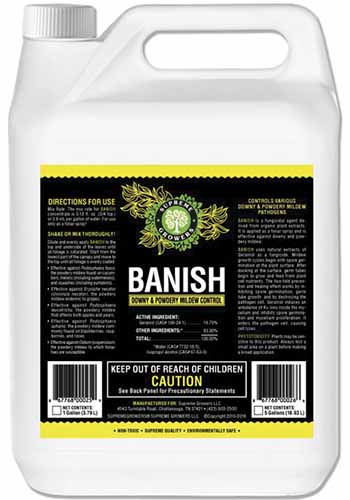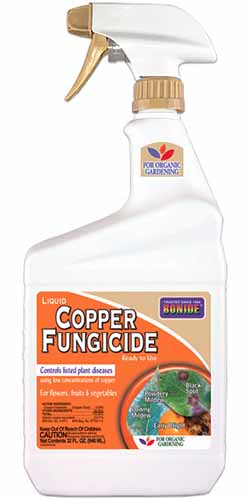How to Identify and Treat Downy Mildew on Roses
Roses are some of the most popular ornamentals for a good reason: They’re stunning. When they’re healthy, that is.
But if you grow roses long enough, you’ll inevitably run into diseases, and downy mildew is becoming a more and more common one.
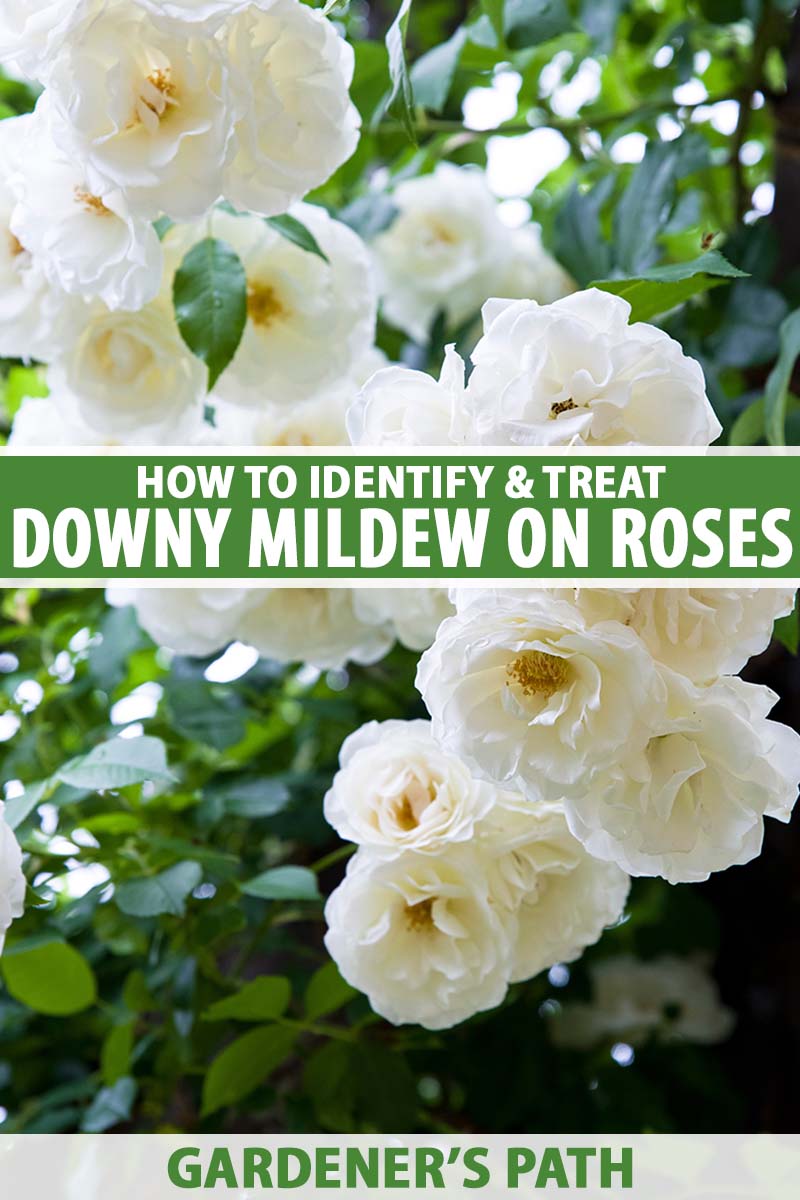

We link to vendors to help you find relevant products. If you buy from one of our links, we may earn a commission.
With its beauty-ruining dark spots and ability to turn a robust bush into a sad, stunted one, this disease isn’t one you can just ignore.
It also spreads like wildfire, and the pathogen that causes it is just as happy to feed on cane berries as it is on roses.
The more we can do to prevent, identify, eliminate, and otherwise get a handle on this disease, the better. This guide can help you do that!
Here’s what we’ll discuss in order to make that happen:
What You’ll Learn
Most rose growers have encountered powdery mildew or black spot, but while downy mildew isn’t as common, it’s still a frequent problem that’s becoming more prevalent, and one you should know how to deal with.
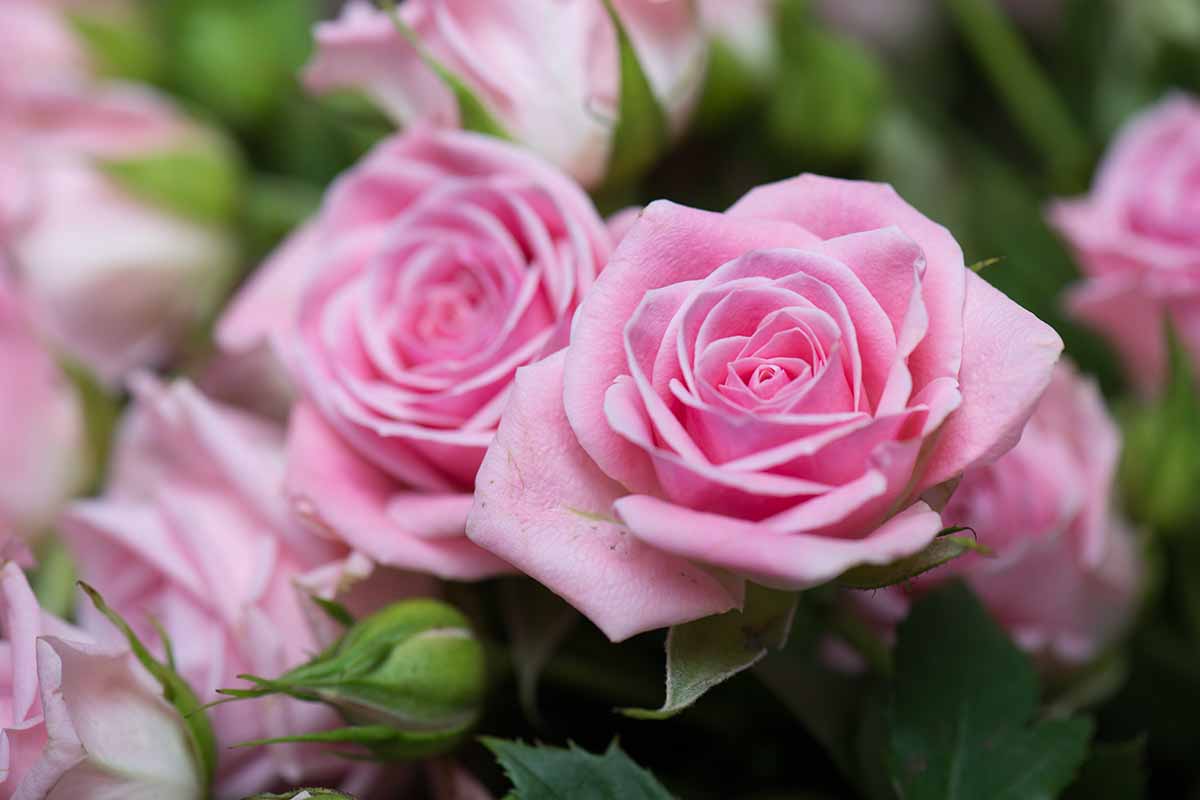

Before we talk about that, let’s chat about what the heck causes this disease.
What Causes Downy Mildew?
Downy mildew is caused by Peronospora sparsa, which is a pathogen known as an oomycete or water mold.
For a long time, scientists thought oomycetes were a sort of lower fungi. Now, they’re classified in a group all to themselves, and we know they’re more closely related to algae than fungi.
This group includes pathogens that cause some pretty nasty diseases like tomato blight, root and stem rots, and of course, many types of downy mildew.
Water molds, specifically Phytophthora infestans, are also responsible for the disease that caused the potato crops to fail in Ireland in the mid-1800s (though the pathogen certainly wasn’t to blame for the bad political climate that led to the rampant starvation people experienced during the Irish Potato Famine).
P. sparsa requires a living host – which is actually good news, for reasons we’ll discuss in a bit – and the presence of water to survive and reproduce.
It also only infects plants in the Rosa and Rubus genera, so you don’t have to worry that your rhododendrons or geraniums are suddenly going to be infected, as well.
The Ideal Conditions for Downy Mildew to Spread
Every pathogen has its preferred conditions, and P. sparsa likes it cool and wet.
When temperatures are hovering between 59 and 64°F and it’s nice and rainy, this pathogen is as happy as can be. Anything over 80°F is a bit too toasty.
Add rain or high humidity above 85 percent to the cool weather, and the conditions are just right for downy mildew.
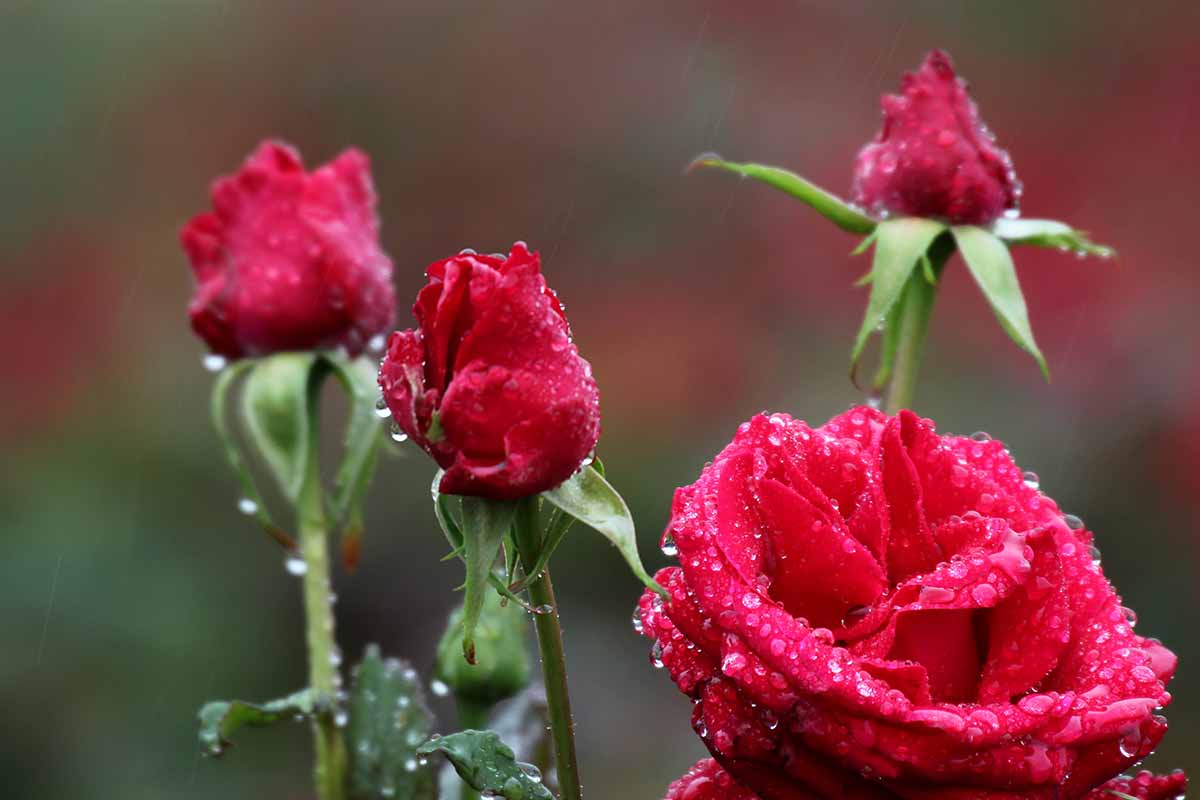

Since it can spread in water or on the wind, a nice breeze, crowded plants that reduce air circulation and thus evaporation, and watering overhead will all help the disease take hold.
Because it spreads so easily, it’s becoming a more widespread problem around the globe.
Species Impacted by Downy Mildew
Every single Rosa species is susceptible to downy mildew, and every species in the Rubus genus, as well. Choke berries (Prunus laurocerasus) can also be infected. When it infects berries, it’s often called dryberry disease.
All this means raspberries, blackberries, and all those other yummy cane berries can carry the pathogen and spread it to your roses, and vice versa.
Even those roses that are touted as disease-resistant like Knock Outs are susceptible.


Rugosa shrubs (R. rugosa) have some natural immunity, though they can still contract this disease. It just happens less often and the symptoms are often less severe.
Symptoms
The first and most obvious sign that this pathogen is paying your plants a visit is spotting on the leaves.
You’ll see irregularly-shaped spots in purple, maroon, or dark brown on the leaf surface. These spots will keep growing larger until they hit a leaf vein, which acts as a barrier.
That means when you see large spots, they’ll often have a straight border on the sides where the veins are. You might also see dark spots on the stems and flower petals.


These spots can be difficult to tell apart from the disease black spot.
As new growth forms on the plant, the tips of the stems will often turn black and die. As the disease progresses, the leaves turn yellow and start falling from the plant.
If you flip over a leaf, you might see gray or white spores all over the underside, though this symptom isn’t always apparent.
If these spores are present, however, it means the pathogen is forming “seeds” to spread all over the rest of your berries and roses.
Canes may crack and the overall growth of the plant might look stunted.
All of these symptoms might be visible or maybe just one, which adds to the challenge of determining whether or not your plant is infected with downy mildew or something else.
The disease can even be asymptomatic. However, once the spores are visible on the underside of the foliage, you can be fairly confident that you’re dealing with P. sparsa.
How It Spreads
Remember those spores we talked about earlier? They can spread through water. That means if you’re watering your rose and some water splashes from one plant to another, the disease can spread.
The pathogen can also overwinter on plant parts or fallen debris. Then, when the growing season begins, all it takes is a little water splashing from debris on the ground and onto a nearby plant and you’ve started the cycle over again.
The spores also spread on wind and can be carried on tools, plant parts, and even your clothing.
Prevention
As with most plant diseases, you’re better off trying to prevent it than you are trying to control it. Spacing your plants appropriately and keeping them well pruned are the first steps toward preventing downy mildew.
You should also water at the soil level rather than on the foliage. This is generally good advice for any species of plant. If you do water on the foliage (no judgment, we’ve all done it), try to do it in the morning so the water can evaporate quickly.
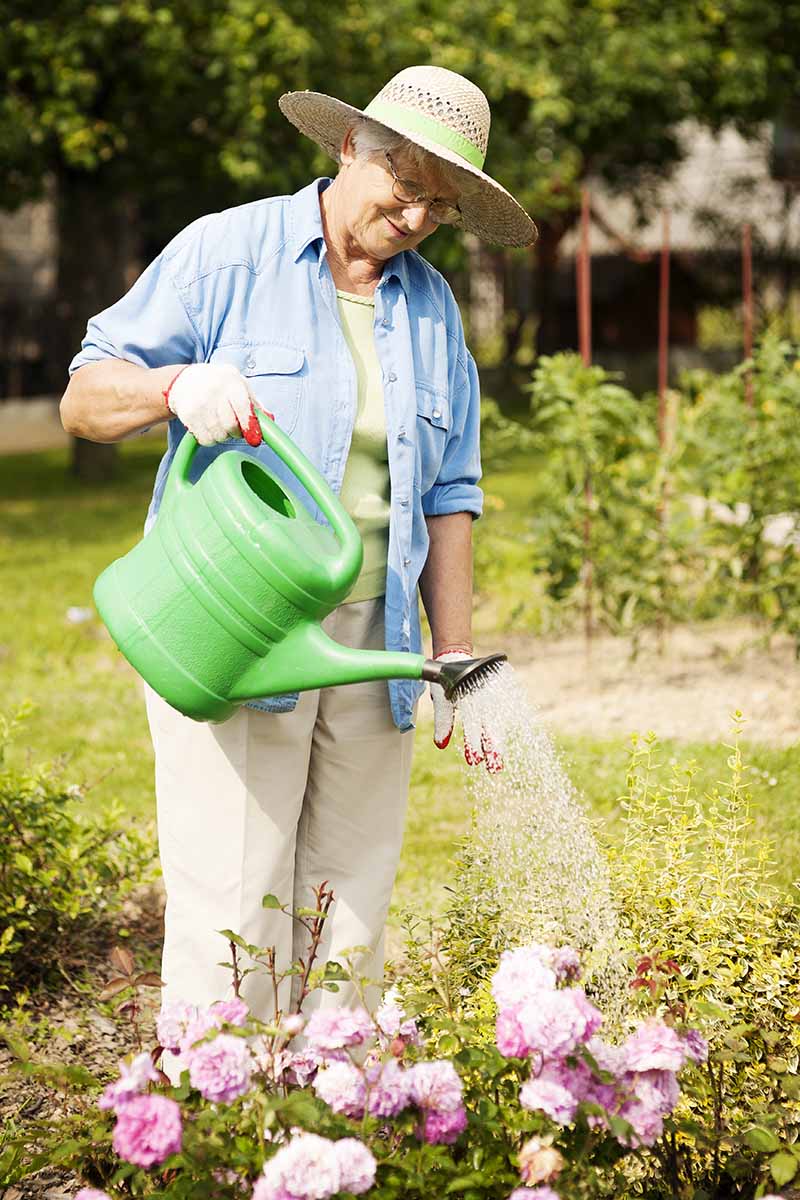

Clean up any debris in the garden in the fall so P. sparsa doesn’t have a place to overwinter.
Another smart garden practice for avoiding just about any disease is to clean your tools well in between plants.
I know it’s a pain, but you can bring an alcohol wipe or a rag soaked in soapy water with you when you garden. Wipe your blades with the rag after finishing one plant and before moving on to another.
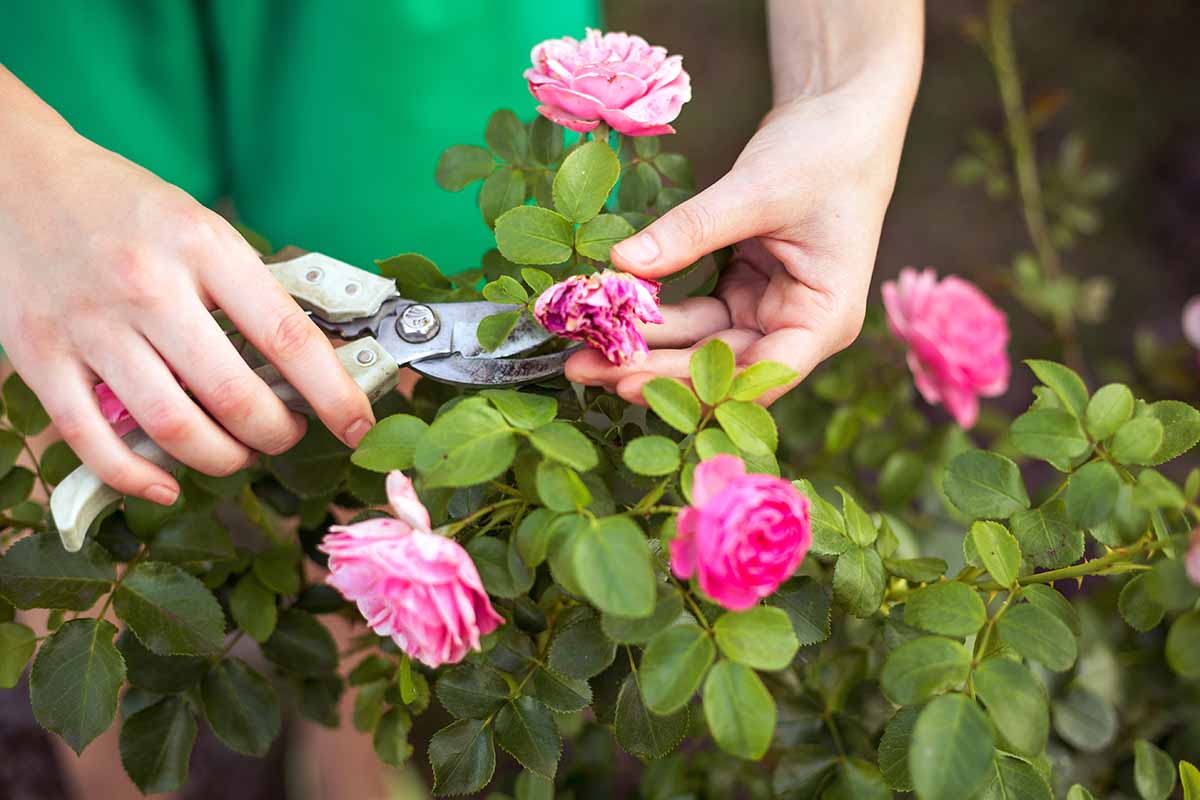

You should also do your best to keep your plants pruned well. And when you transplant them, be sure they have the recommended amount of space between them for the particular species or cultivar.
Control
Don’t feel bad if, despite your best efforts, downy mildew takes hold in your roses.
If there was a foolproof way to prevent it, commercial growers around the world would be celebrating. But diseases are a fact of life and sometimes we just have to do our best to deal with them.
In commercial settings, growers use a combination of heat treatments and the application of fungicides to reduce infections. Many of the fungicides used aren’t available to home growers and heat treatment is difficult in the garden.
Heat treatment involves raising the temperature in a greenhouse or other structure to the hottest the plant can safely stand in order to kill the pathogen. Unless you have your roses growing in a greenhouse, that’s not going to be an option.
Plus, there’s no point in pruning away the infected bits because the disease is systemic.
However, if you have other plants that might be infected, pruning any branches that have spores on them can help to reduce the spread, as long as these are disposed of carefully.
So what can you do? Your best bet is to rotate fungicides.
A fungicide that contains Geraniol, which is derived from geraniums, works well. Arbico Organics carries BANISH, which contains Geraniol, in 32-ounce or gallon containers.
Copper fungicides are also effective.
Once again, you can head to Arbico Organics to grab a 32-ounce ready-to-use container, a 16- or 32-ounce hose-end spray, or a 16-ounce concentrate.
Bonide Liquid Copper Fungicide
Apply one of these according to the manufacturer’s directions. Wait three weeks, and apply the other. Do this for at least three months or until the symptoms are gone.
If you found this disease on a rose in the previous year, start treatment in the spring after the foliage has emerged on the plant. You should also preventatively treat any other roses in your yard if one is already infected.
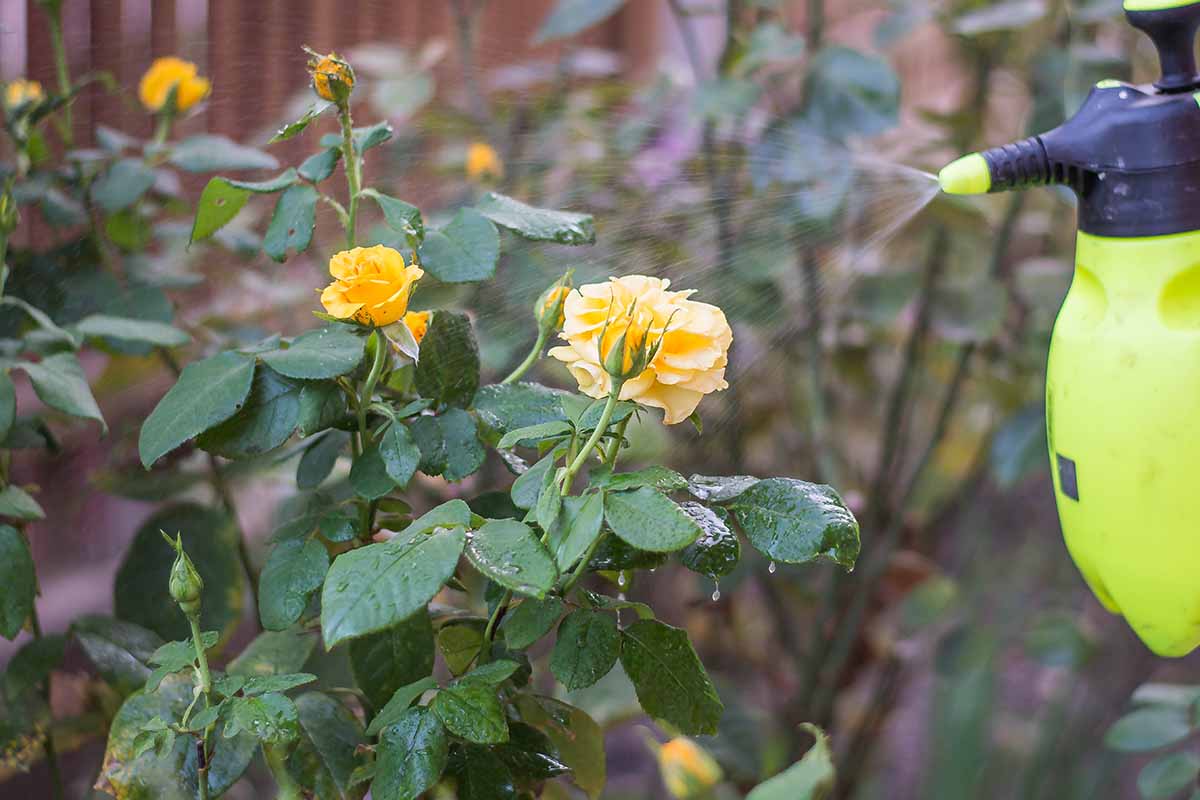

Be aware that you might never fully eradicate the disease in a heavily infected plant and you may just be better off pulling it. You might want to give it a year or two of treatment and then decide.
Downy Mildew Doesn’t Have to Spell Disaster
I won’t lie to you, once downy mildew has its talons in your roses (or berries), it’s not good. But it doesn’t have to be a death sentence for a beloved plant. There are treatment options available that can restore your plant back to health.
And in the future, you know the best steps to take to reduce your chances of ever having to deal with it in the first place.
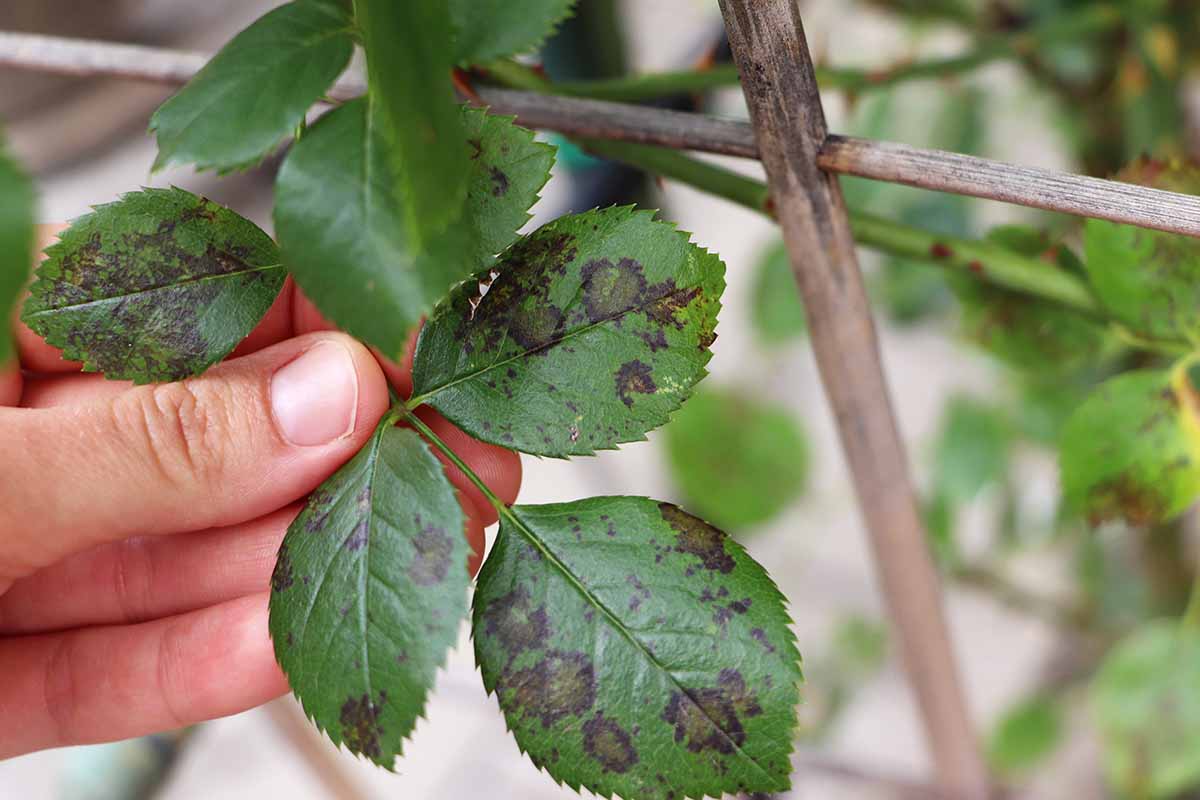

What kind of roses are you growing in your garden? Have you seen signs of downy mildew on them? Let us know in the comments.
Did this guide help you figure out your own downy mildew situation? I hope so!
If you feel well-prepared now to tackle this common issue, you might want to check out some other guides that can help you to make the most of your roses, including:

